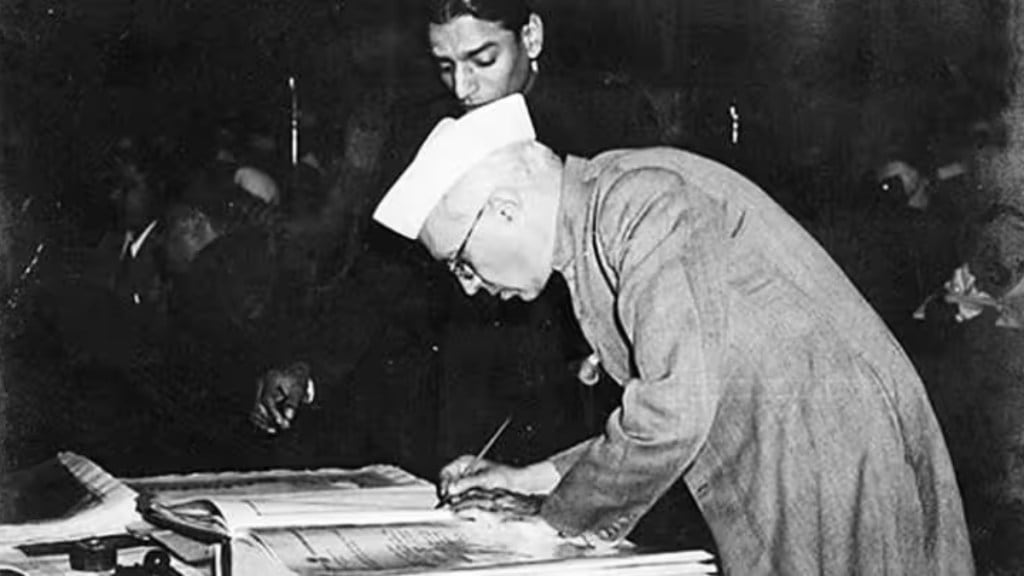In the tender year of 1947, as India wrenched itself from the colonial grip and found itself a newborn sovereign, the world was anything but a nurturing cradle. The Cold War was sharpening its edges, dividing nations into a binary black-and-white, a tension palpable in every diplomatic corridor.
India, emerging with battle scars from its fight for independence, sought a different tune. Guided by the erudite vision of Prime Minister Jawaharlal Nehru, India took its first steps, not with faltering uncertainty but with the grace and poise of a practised dancer. It danced to the rhythm of non-alignment, to the principles of Panchsheel, and in doing so, it invited the world to a new waltz.
The Non-Alignment Movement: An Uncharted Symphony
Historical Context: The melody of India’s Non-Alignment Movement (NAM) was composed in the crucible of colonial servitude. This was no mimicry of Western notes but an orchestration built from India’s unique historical experiences.
Strategic Autonomy: NAM provided the fluidity that allowed India to move freely between the East and West, not bound by the rigid dichotomy but a graceful whirl across political landscapes.
Economic Crescendo: Avoiding the chains of alliances, India managed its economic destiny, a crescendo that built bridges between capitalist and communist nations.
Panchsheel: A Ballet of Coexistence
Philosophical Origins: The roots of Panchsheel’s delicate ballet trace back to ancient Indian thought. This wasn’t politics as warfare, but diplomacy as art, an ensemble performance guided by respect for sovereignty and a love for peace.
Diplomatic Choreography: The dance reached its zenith with the 1954 agreement with China. Yet, it was not confined to one partner but was a global performance, a choreography of dialogue, trust, and collaboration.
Economic & Cultural Overture: Economic exchanges became both transactions and symphonies of mutual development. Cultural liaisons were not mere formalities but gentle overtures towards understanding and connection.
Diplomatic Triumphs: The Ballet Continues
Sino-Indian Agreement: The agreement with China was a performance of grace, a milestone that resonated across the world’s stage.
Leadership in Decolonisation: India’s dance was not solo; it invited the colonized to join in, leading the ballet of liberation across Asia and Africa.
Regional Harmony: The performance had moments of tension, but adherence to Panchsheel allowed a ballet of stability and peace.
Economic Cooperation & Development: Harmony in Motion
Aid as Altruism: India extended its hand, not just in a formal gesture but with aid that reflected a commitment to a shared dance of development.
Expansion of Trade Relations: The waltz of non-aligned trade was a sweeping movement linking diverse partners in economic growth.
Cultural Exchanges: Dance transcends language, as did India’s cultural initiatives, fostering a universal language of goodwill.
Challenges & Critiques: The Dance’s Complex Rhythms
Idealism Versus Realpolitik: The dance was not without its missteps. Critics pointed to the clash between the aesthetic beauty of Panchsheel and the grinding realism of geopolitics.
Economic Constraints: The crescendo was sometimes a murmur; the economic performance was not as robust as envisioned.
Inconsistencies in Policy Implementation: The choreography had its flaws, leading to critical eyes and doubts.
Legacy & Continuing Relevance: An Enduring Dance
An Enduring Model: The dance continues, its steps serving as a model, its grace a lesson in autonomy and peaceful engagement.
Panchsheel in Modern Diplomacy: The principles resonate still, a timeless rhythm in the ever-changing diplomatic dance floor.
Influence on Current Foreign Policy: The legacy is not a relic; it shapes and informs, like a gentle guiding hand in India’s current choreography.
The Dance of a Nation: The period of optimism and Panchsheel in India’s foreign policy was a visionary performance, a dance of idealistic principles and pragmatic engagement. It set the tone for India’s unique role on the international stage, a role not dictated by might but inspired by wisdom.
Though challenges were encountered, the dance was never halted, and its impact continues to resonate. The ideals of this era are not locked in time but echo through the corridors of today’s world, offering timeless grace and wisdom.
The story of India’s foreign policy between 1947 and 1960 is not merely a historical narrative but an elegant dance that continues to unfold. It’s a ballet that spans time, influencing not just India but the world, embodying principles that continue to inspire a harmonious global community. A dance, after all, transcends mere movement; it speaks to the soul.

